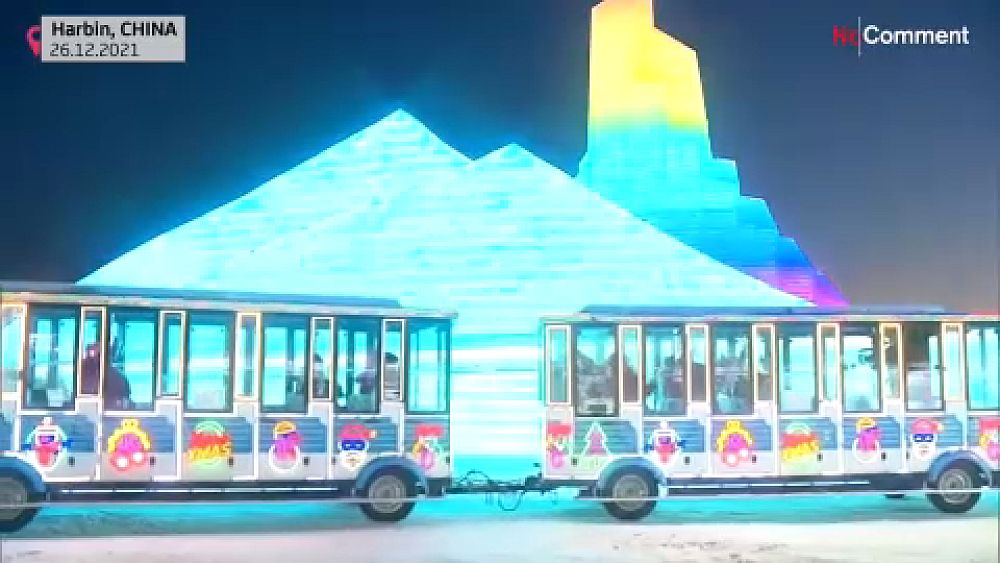Successful take-off on Saturday for the James Webb Space Telescope (JWST), awaited for thirty years by astronomers around the world to examine the Universe with unparalleled means, which will be able to reach its observation post, 1.5 million km away of the earth.
The JWST, the most powerful space telescope ever designed, took off with an Ariane 5 rocket from the Guyanese Space Center at 1:20 p.m. French time, before separating 27 minutes later, as scheduled.
“Good separation Webb telescope, Go Webb”, announced the director of launch operations Jean-Luc Voyer from the jar of the control center in Kourou, to thunderous applause.
>> Read also: The James Webb Space Telescope is off to a good start!
–
“An important step has been taken,” tweeted NASA, which built the JWST with the collaboration of the European (ESA) and Canadian (ACS) space agencies. For its part, the Arianespace group hailed “the best Christmas present” with this launch.
Flight over the Atlantic, Africa …
Just after taking off, the telescope flew over the Atlantic, then Africa, until the final separation, which took place at an altitude of 1,400 km and a speed of over 34,000 km / h. An on-board camera on Ariadne’s upper floor showed this separation and especially the deployment of the James Webb’s solar panels.
The telescope will take about a month to reach its final position. With the ambition to shed more light on humanity on two questions that torment it: “where do we come from?” “And” are we alone in the Universe? “.
And thus see the glimmers of “cosmic dawn”, when the first galaxies began to light up the Universe since the Big Bang, 13.8 billion years ago.
–
In the footsteps of Hubble
James Webb will provide a better understanding of the formation of stars and galaxies, and observe the exoplanets of which astronomers are discovering more and more specimens, to perhaps identify other Earths one day.
The James Webb will follow in the footsteps of the Hubble telescope, which revolutionized the observation of the Universe: it was thanks to him that scientists discovered the existence of a galactic black hole at the center of all galaxies, or water vapor around exoplanets.
Imagined by NASA from the launch of Hubble in 1990, the JWST differs in more than one way.
The size of its mirror, with a wingspan of 6.5 meters, gives it a surface area and therefore a sensitivity seven times greater, sufficient to detect the thermal signature of a bumblebee on the Moon.
Another difference: its mode of observation. Where Hubble observes space primarily in the domain of visible light, James Webb ventures into a wavelength that eludes the eye: near and mid-infrared.
A radiation that any body, star, human or flower, emits naturally.
This light will be studied by four instruments, equipped with imagers and spectrographs to better dissect it. Their development mobilized a plethora of engineers and scientists, under the leadership of American and European laboratories and industrialists.
Thanks to this “by looking at the same objects (as with Hubble), we will see new things”, explained in Paris the astronomer Pierre Ferruit, scientific co-head of the telescope for ESA.
For example the first galaxies, objects whose distance made their lights turn red. Or the young colonies of stars, which grow up hidden in the dust clouds of their nurseries. Or the atmosphere of exoplanets.
–
Ten billion dollars
The prerequisite for the correct operation of the JWST is an ambient temperature so low that it does not interfere with the examination of the light.
Hubble orbit some 600 km above Earth. At this distance, the JWST would be unusable, heated by the sun and its reflection on the Earth and the Moon.
It will be placed at the end of a one-month trip 1.5 million km away. And will be protected from solar radiation by a thermal shield of five flexible sails which will dissipate the heat, lowering the temperature (which is 80 °) to -233 degrees on the telescope side.
But before getting there, the machine and its designers will have to achieve a real feat: its flawless deployment, with a series of operations involving, for example, for the shield alone, 140 opening mechanisms, 400 pulleys and almost 400 meters. of cables.
Because the observatory, with its 12 meters high and a shield equivalent to a tennis court, had to be folded to slip into Ariane 5’s cap. “The encapsulation” was carried out with laser guidance to avoid any damage to the instrument, the development of which cost some ten billion dollars.
For these maneuvers, NASA also imposed draconian cleanliness measures to prevent any contamination of the telescope mirror, by particles or even charged breath …
It will take several weeks to find out if the telescope is ready for use. With an official entry into service scheduled for June.
–


